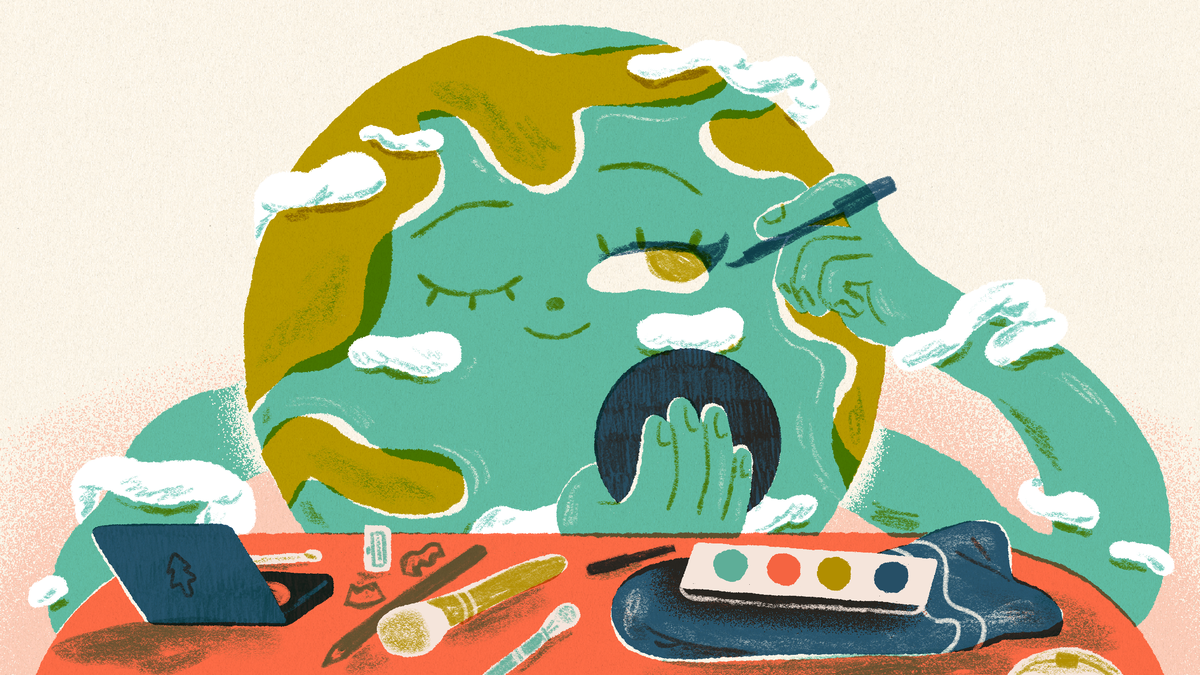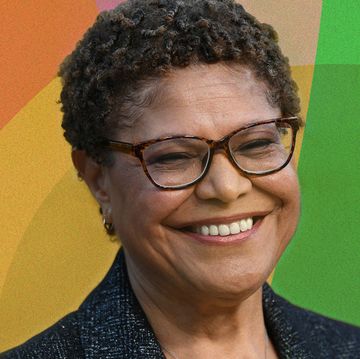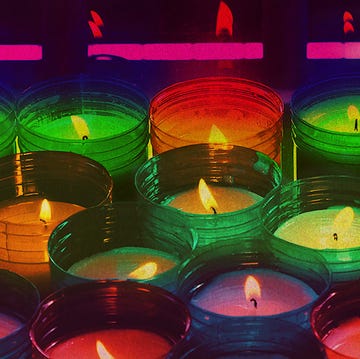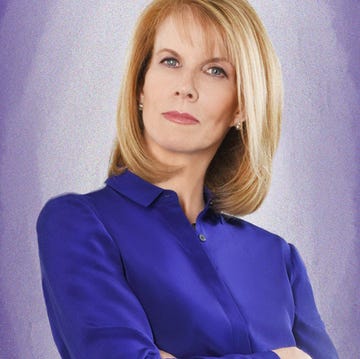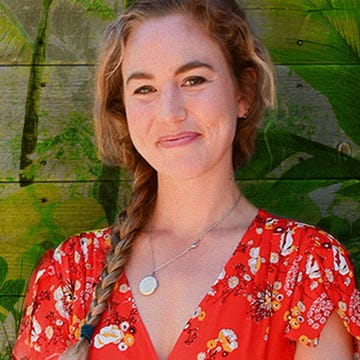A cleaner, greener world starts with us. In celebration of Earth Day, Shondaland is looking across the spectrum of our existence to see how updating the everyday – our diets, beauty regimes, cars, wardrobes, and more – can help care for the planet with thoughtfulness and grace.
In the billion-dollar industry of beauty, right now no word is buzzier than “clean.” Much like “natural” and “organic,” personal-care companies have used the term to distinguish their products from the droves of chemically inclined options lining Sephora’s shelves. So, consumer confusion has reached a fever pitch, with 58 percent of recently polled beauty buyers conflating “natural,” which focuses on what ingredients are in the product, with “clean,” which is more about what isn’t in the product, as well as the product’s environmental impact. Meaning: It’s safe to say the term “clean beauty” could benefit from, well, some clearing up.
What "clean" really means
By definition, clean beauty describes a product formulated without toxins — harmful ingredients like parabens (artificial preservatives found in cosmetics), coal-tar dye, and formaldehyde that might jeopardize the health of humans and often the environment. For decades, the beauty industry has used toxic ingredients because they are cheap, readily accessible, and function as effectively as preservatives or solvents in cosmetics. So, finding a work-around without compromising a product’s efficacy takes commitment.
“Toxins bioaccumulate in our bodies and in the environment and have been shown to be harmful to human and environmental health,” says Hillary Peterson, the founder of clean skincare brand True Botanicals. “So, the big question I asked myself was: Do we need these ingredients in order to create the most effective, luxurious products? And we have proven that the answer is definitely not.”
It’s important to note that ingredients generally omitted by clean-beauty brands aren’t necessarily dangerous in other products, as your reaction to them hinges on your unique genetic makeup.
Nonetheless, you can bet that certified clean-beauty brands have always played things on the safe side. At its inception, the Olivia Wilde-endorsed True Botanicals decided to debunk the myth that clean formulas crafted with naturally derived ingredients were no match for their chemical counterparts in potency. As such, they also reject fillers such as water, waxes, and synthetic silicones, instead opting for biocompatible ingredients — like antioxidants, ceramides (fats or lipids in skin cells that help retain moisture), and plant oils — that are wild-harvested from regenerative farms.
Key ingredients to avoid
A recent study by the Environmental Working Group showed that, on average, a woman would apply an average of 168 different chemicals to her body every day.
Talc (a frequent filler in pressed powders that is often contaminated with asbestos), parabens (a preservative common in makeup and hair care), phthalates (used in eyelash glue and nail polish as an adhesive), and toluene (also in nail polish) have been linked to respiratory issues, allergic reactions, hormone imbalances, and even cancer. Similarly problematic are ingredients often used to improve the texture of a product like Teflon or silicones — both known to disrupt hormones.
When it comes to hair care specifically, formaldehyde-formulated products, which break the bonds of hair to permanently straighten strands, are rampant. While formaldehyde has been banned in Europe, Canada, Australia, and New Zealand, it is still legal throughout the United States (for reference, the U.S. has banned fewer than 20 chemicals, while the EU has banned more than 1,200). What makes formaldehyde particularly dangerous is that even after it has been rinsed, toxic fumes are released.
“It’s not just that you’re breathing in these toxic fumes, but so are your kids, your pets,” says Alison Romash, the president of the at-home keratin-treatment system Gussi, which is 100 percent formaldehyde-free, paraben-free, and phthalate-free. “If a product can be inhaled or ingested, then the risk factors from these ingredients intensify.”
Other harmful chemicals in cosmetics can include metals (think: lead) and coal tar — both of which can result in hair loss, sight loss, and general allergic reactions. It’s important to note that while the FDA won’t pre-approve cosmetics or ingredients, it will respond to consumer complaints.
When it comes to environmental harm from the use of sunscreen, regularly used toxins that absorb UV rays — such as octinoxate and homosalate — harm coral reefs. Body washes have historically been a repeat offender, especially those that contain microplastic beads, which were long used as a common exfoliant until they were banned in the U.S. in 2017. In New Zealand, you can face a $100,000 dollar fine for using cosmetics with microplastic beads due to their capacity to harm marine life. And yet many body washes still contain the most recognizable toxins — phthalates, parabens, formaldehyde, and sulfates — that can affect hormones and cell replication, which could lead to cancer.
How to guarantee cosmetic cleanliness
Self-declared “clean” beauty companies are common, but third-party certifications are here to set the record straight. True Botanicals is the first brand to have every single product certified by clean-cosmetics gatekeeper Made Safe. The organization has become a go-to for clean-beauty fans, rigorously ascertaining that each ingredient and sub-ingredient is nontoxic before declaring a product safe for all. You can find its seal on specific cosmetics and even apparel, but it doesn’t hurt to pursue its certified products page to see who made the cut.
“In the absence of stricter government regulations, third-party certifications [like MadeSafe] are extremely important, and as a consumer, that is what I trust the most,” shares Peterson.
Of the nontoxic-beauty seals, Made Safe is among the most coveted. EWG (Environmental Working Group), an ingredient-transparency organization, has also become an industry favorite. Interestingly, True Botanicals has also been declared microbiome-friendly — a new certification that shows a brand’s consideration of the skin’s microbial diversity.
Other brands that have also become household names for their commitment to clean ingredients include Tata Harper and Versed, both of which offer luxury skincare that prioritizes high concentrations of organic, active ingredients; ILIA and Crunchi, which approach makeup mindfully with an emphasis on shade diversity; and the likes of Luxy (extensions brand-cum-hair care) as well as scalp savior Act + Acre, which are also set to become omnipresent in the beauty market. Then there are clean sunscreens, which, due to performance demands — broad spectrum, SPF 30+, white-cast and coral-safe — are among the most difficult to produce. Clean favorites among beauty fiends include Sun Bum, Unsun, and Supergoop.
For those who feel overwhelmed by the prospect of differentiating clean products, there’s a way to streamline the process. Now there are several apps — like Clean Beauty, Think Dirty, and the EWG Healthy Living App — that allow you to learn about a product before purchasing, while major beauty retailers like Sephora and Ulta have their own certification systems that allow you to shop for their stock of clean brands directly. Glow Recipe, a cult favorite among skincare junkies, is a brand that meets Sephora’s standards for “Clean and Planet Positive.” Not only do their products exclude toxins, Glow Recipe is committed to being carbon- and climate-neutral certified at the end of this month.
“We believe that it’s the brand’s responsibility to communicate clear and transparent guidelines around their approach to clean formulations,” says Glow Recipe co-founder Christine Chang, adding, “Our hope is that as an industry we can work together to better guide customers through what can often be a confusing journey.”
Animal products vs. animal cruelty
While it’s great to know that a product is formulated with safe ingredients, it’s often overlooked whether the brand harmed animals in its creation. In the United States, where a company can claim to be cruelty-free without regulation, the Leaping Bunny is a logo consumers can rely on — certifying a product is not tested on animals.
That said, many well-meaning consumers tend to eschew any risk of animal cruelty by optioning for vegan-only products, but that isn’t necessarily to their benefit. Not only can cosmetics be certified as vegan even if they’re tested on animals, but brands can also include animal byproducts without harming animals themselves. Such is the case with Gussi, which derives ingredients from sheep wool and discarded silkworm cocoons but still maintains its PETA certification based on the verification that they and their suppliers do not and will not “conduct, commission, pay for, or allow any tests on animals for their ingredients, formulations, or finished products.”
“No animals are harmed in the harvesting of these materials; they would actually otherwise go to waste if we didn’t use them,” explains Romash. “We like to be totally transparent, so it’s important to mention this.”
The clean-beauty commitment
Earlier this month, the first trade show dedicated to clean cosmetics opened its doors to beauty buyers in London. It’s a testament to the growing demand for certified nontoxic and eco-conscious products, with the two-day show walking retailers through clean and sustainable formulations, accessories, and packaging, as well as traceable ingredients.
Attendees at the London event might have noticed a newfound emphasis on upcycling — sourcing effective ingredients from traditional waste (e.g., a body scrub from discarded apples) — to cater to the hyper-environmentally aware digital generation. As such, we should expect brands to begin to emphasize their eco impact as much as they do their nontoxic and cruelty-free formulations — much like Glow Recipe. In doing so, brands can position themselves as a one-stop shop for a mindful beauty consumer’s needs.
That’s not to say these innovations come easy for the brands in question. Rewriting beauty’s rulebook while delivering transformative results takes creativity and commitment.
Now many clean skincare companies, along with hair and makeup brands, have found their niche in non-negotiable ethics — and with consumer demand steadily increasing, the whole industry is getting a good scrubbing.
“I am so proud that we’ve been able to deliver transformative results while formulating with ingredients that are safe for humans and the planet — and it is sparking real change,” says Peterson. “That’s the legacy I hope to leave for the beauty industry.”
Beatrice Hazlehurst is a New Zealand–born writer covering culture, entertainment, and lifestyle for multiple outlets. She nomadically traverses both coasts, but currently you can find her by the beach in Southern California.
Get Shondaland directly in your inbox: SUBSCRIBE TODAY
